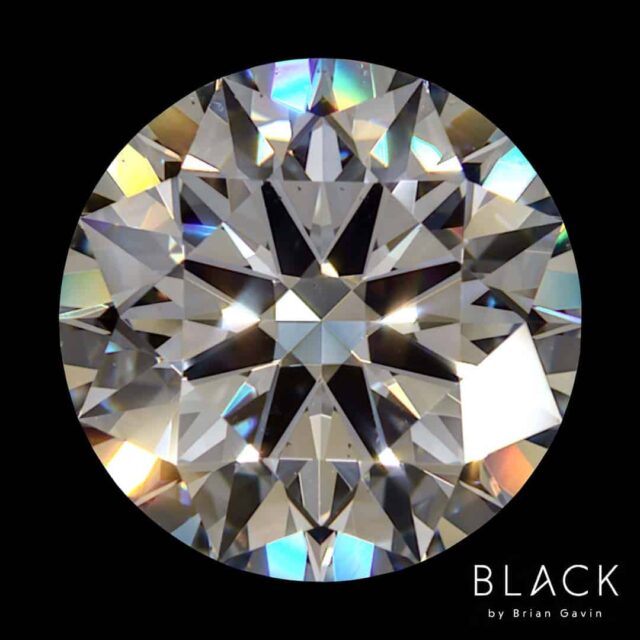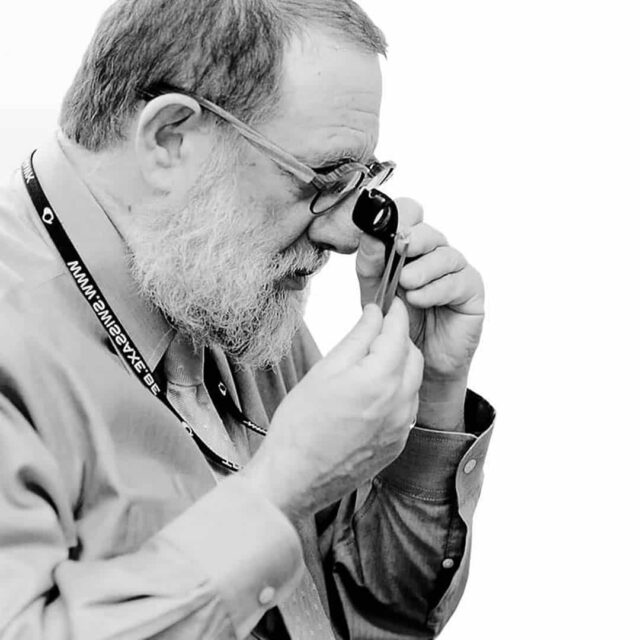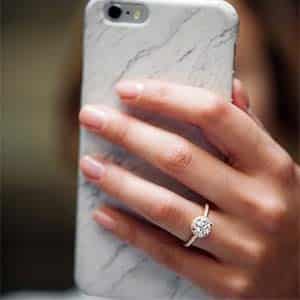The diamond polish grade refers to the consistency of finish on the facets' surface. It's similar to the reflective properties of a finely polished automobile.
Of course, we use 10x magnification to determine the polish grade of diamonds. Whereas the surface area of a car is larger and magnification is not necessary.
Nevertheless, there are similarities because characteristics like "polishing lines" downgrade the polish rating. In some cases, polishing lines may be the result of small diamond crystals embedded in the polishing wheels.
Diamond cutters use metal polishing wheels to polish the diamonds' surface. While not quite the same in appearance, polishing lines are similar to the swirl marks left on the surface of a car from an orbital buffer.
However, they are much less obvious and are actually difficult to detect. It is also important to note, that polish lines are straight in appearance. Another factor of the Polish Grade for Diamonds is the absence or presence of burnt facets.
For example, a burn mark on 2-carat diamond is usually white in color and not black, contrary to probable expectations. Burn marks may be the result of the polishing process, or a repair such as the re-tipping of the prongs that hold the diamond in the ring.
Surface Blemishes Impact Diamond Polish Grades:
It is important to note that surface blemishes such as pits, nicks, scratches, and bruises, are not considered in the assessment of the polish grade. In that case, they might not be indicated on the plotting diagram.
As a matter of fact, surface blemishes are usually mentioned under the "Comments” section and may appear as "minor details of finish not shown”.
By the way, if you’re wondering what a "bruise” is, it is essentially a concussion mark or grouping of tiny feathers left as the result of an impact.
It can also be caused by diamonds rubbing and bumping up against each during storage or shipping. To avoid "bruising” most dealers store diamonds individually in special parcel papers.
Through The Looking Glass:
At first glance, the polish grade of a diamond may seem obvious to you, but it’s important to remember to look at each facet of the diamond carefully.
Just because you don’t see anything when viewing the diamond through its crown (top half) does not mean that you won’t see anything through the pavilion (lower half).
There are 58 facets on the standard modern round brilliant cut diamond, if one of them has a minute burn mark on it the polish grade of the diamond could plummet from Very Good to Fair.
It is for this reason that determination of the Polish Grade is best left to experienced diamond grading professionals like the AGS or GIA Laboratory.
Most laboratory issued diamond grading reports rate polish on a scale which might include ratings such as Poor, Fair, Good, Very Good, and Excellent or Ideal. In general, determining factors of each grade are as outlined below.
GIA Excellent or AGS Ideal Polish:
This is our preference in terms of a polish grade. No polish lines or marks are visible when the diamond is viewed under 10x magnification. High magnification, such as 30x may be used to locate any possible imperfections. The brilliance of a diamond with Excellent Polish will be noticeably superior to that of a diamond with a polish rating of Good.
Very Good: Represents diamonds that contain one or two minor groupings of transparent polish lines which are visible under 10x magnification. Higher magnification will again be used to locate these areas easily. The degree of brilliance between a diamond graded as Very Good in Polish and Good is still noticeably different.
Good: Numerous areas consisting of minor transparent lines are visible under 10x magnification. Occasional white polish lines may also be visible, but limited in number. As a bare minimum, we recommend that a diamond have a Polish Grade of Good or better.
Fair: Numerous transparent or white polish lines are visible. Minor burn marks may be present. Luster is below average and unimpressive.
Poor: A significant presence of heavy white polish lines and/or burn marks are visible on the surface of the diamond. Luster is minimal and the diamond may appear to be cloudy in appearance.
The American Gem Society Laboratory (AGS) uses a numerical system to represent the Polish Grade of the diamonds that they evaluate. The numerical grades and associated degree of visibility of the Polish Characteristics are provided below.
AGS Numerical Polish Grade Reference Chart:
Our Recommendations for Diamond Polish:
We recommend you purchase a diamond with a Polish Rating of GIA Excellent or AGS Ideal. At the very least, the Polish Rating of the diamond you select should be Very Good.
Yep, you guessed it, a diamond with a Polish Grade of Excellent is going to cost a smidge more than a diamond with comparable characteristics and a Polish Rating of Very Good. However, there is also a significant difference in the brilliance of the diamond.
We consider a true "Ideal Cut" to be a diamond with Zero Ideal Proportions and a Polish and Symmetry Rating of either AGS Ideal or GIA Excellent depending on which laboratory issued the grade. Remember, there are four categories to consider when determining a diamond's overall cut rating:
- 1Polish.
- 2Symmetry.
- 3Proportions.
- 4Light Performance.
The latter of which will be dictated by the proportions and the degree of optical precision. That is the consistency of facet size, shape, and the alignment of the facets as they are polished onto the surface of the diamond.
So be sure to consider all four factors of diamond cut quality when selecting the diamond of your dreams! And remember that Brian Gavin is the only diamond cutter in the world who holds a patent for maximizing light performance in the modern round brilliant cut diamond.




